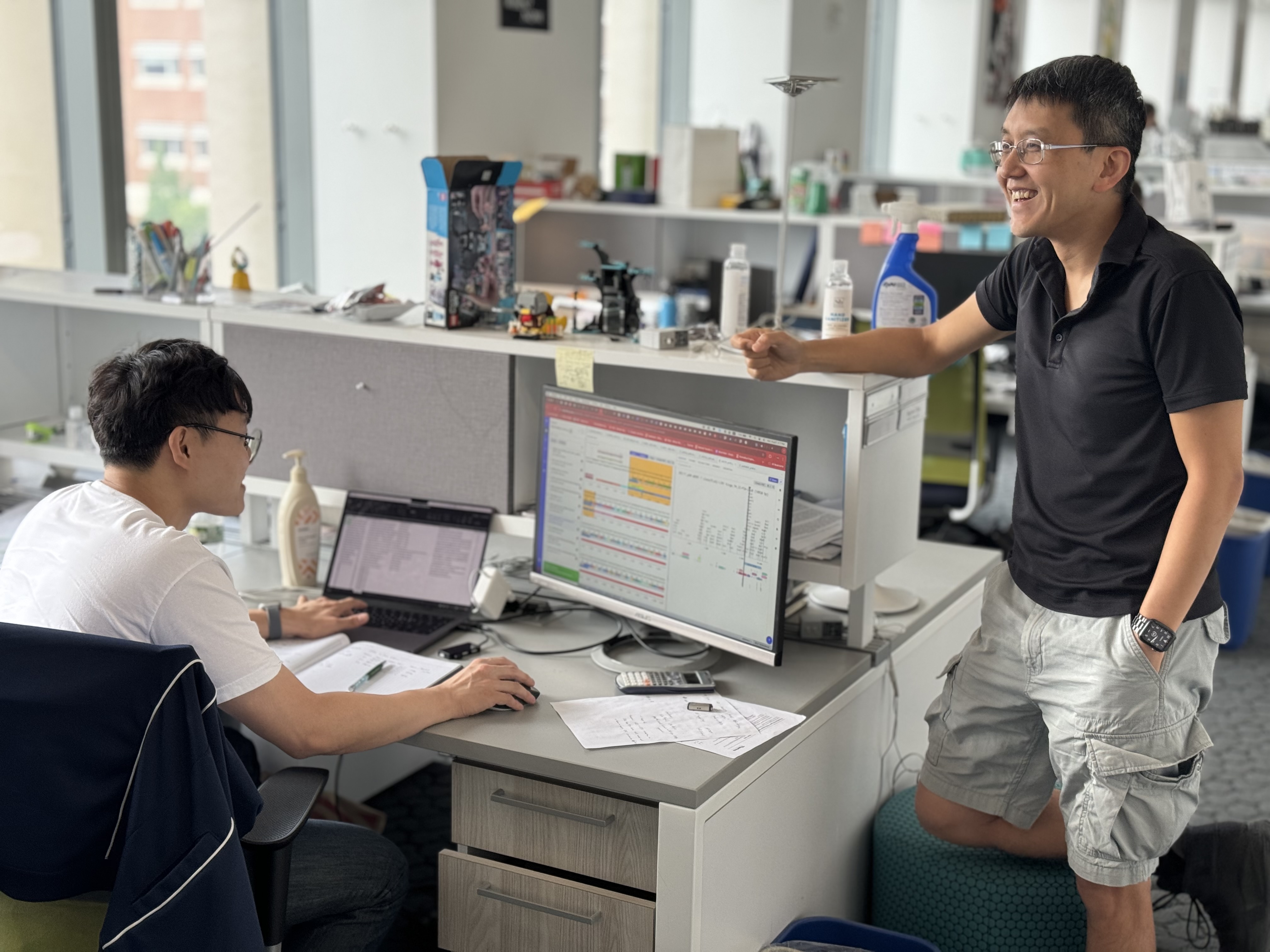Scientist Profile – Professor Wilson Wong
Investigating and advancing the medical applications of synthetic biology
Wilson Wong, Ph.D. – Associate Professor of Biomedical Engineering
The Wong Lab has built a design-driven research program in synthetic biology to develop innovative technologies for therapeutics and diagnostics that will help combat maladies like autoimmune disease and cancer.
Professor Wilson Wong (Biological Design Center) talked about his research, his unexpected path to becoming a bioengineer, and his love of the Dune novels.

How would you describe your research and the goals of your lab?
My lab develops and applies genetic engineering technologies with the goal of advancing gene and cell therapies. One area of research, for instance, involves the engineering of human immune cells that can treat cancer. More recently, we started researching RNA modification with the goal of treating autoimmune diseases and developing antiviral therapies.
How do you use engineered immune cells to treat cancer?
A major focus of our lab involves a type of immune cell called T cells, and a therapy called CAR T-cell therapy. The idea is that you can actually take T cells from the patient’s blood and engineer them so that they produce this “chimeric antigen receptor” (CAR). This receptor allows the T cell to find and attack cancer cells once it is reintroduced into the patient. The T cells can also multiply, which could potentially be dangerous if it’s not controlled. One innovation our lab is developing involves CAR T cells that can be deactivated by giving the patient a drug. This essentially gives the cells an “off switch” that makes the therapy safer.

Can you say more about your research on RNA-based treatments?
Many of us have received an RNA vaccine and we know that it can be very effective combating viruses like COVID. The challenge with RNA treatments is that they can trigger a massive inflammatory response, but it turns out you can slightly modify one of the nucleotides so that it will begin expressing the necessary protein without causing this inflammatory response, and this solution has proven very successful for developing some vaccines. But there are certain RNA-based therapies that require what’s known as self-amplifying RNA (saRNA), and initially it seemed the modified nucleotide approach wouldn’t work for saRNA-based therapies because the saRNA could no longer copy itself.
In a recent collaborative study that included our lab, we eventually found a modified nucleotide that both avoided a massive inflammatory response and allowed saRNA to continue self-replicating. This discovery has opened up potential for so many different therapeutic applications which we’re now exploring.
Our RNA research has been a very fun project for me. It started a couple of years ago and it was largely driven by a talented graduate student in my lab, Josh McGee—I must say, before Josh came I knew very little about RNA research!
Did you always want to be a bioengineer?
Growing up in Hong Kong I wasn’t a very good student (I failed math in third grade). The Hong Kong education system just didn’t work for me, and even though I liked science I was terrified of biology—so no, I definitely didn’t think I would become a bioengineer. Then I came to this country, and even though I didn’t speak English well at the time I fared much better in the American education system—they let you explore. In high school, I had a great teacher who got me interested in chemistry, and I spent much of my college thinking I might become a chemical engineer. I was still avoiding biology, partly because I thought I would have to memorize all these Latin words, which was intimidating for an immigrant who was still improving his English. I didn’t take any biology courses until in college.
My first exposure to biomedical research was almost by accident. I applied to dozens of summer internships, and one of the only opportunities that came back was a position at the National Institutes of Health in a lab run by a well-known immunologist. The research sounded interesting enough, and I also thought living in Washington D.C. for a few months would be fun, so I took the job. I remember one of my first tasks involved growing cells in a culture flask. I would transport half of them to a second flask so that the cells had room to grow, and the next day I would see more cells, and for some reason this just fascinated me—I just thought, “Wow, things grow!” Compare that to chemical research: If I set a beaker of water on a table overnight, I don’t get two beakers of water the next day!
The experience in that lab changed my whole mindset, and from that point on I wanted to pursue biomedical research. I’m so glad that PI gave me chance, because it changed my life.
If you could have one superpower, what would it be?
Teleportation—this way I could live somewhere nice and warm and still come to Boston University to work. I could also visit family or travel around the world without suffering the plane ride.
What is your favorite book?
I love the whole Dune series by Frank Herbert (and later his son). It has an anti-hero theme and is really against the idea of a world savior, which I find refreshing. I also mentioned teleportation earlier, and Dune features this exciting space-folding technology that makes teleportation possible. The whole story is also very philosophical, touching on themes like water and resource scarcity, the environment, and religion. In the early nineties there was actually a computer game I loved playing called Dune II which was revolutionary for its time—an important precursor to real-time strategy games like StarCraft—and that was how I first found my way to the books.
Interview conducted and edited by Jim Cooney.